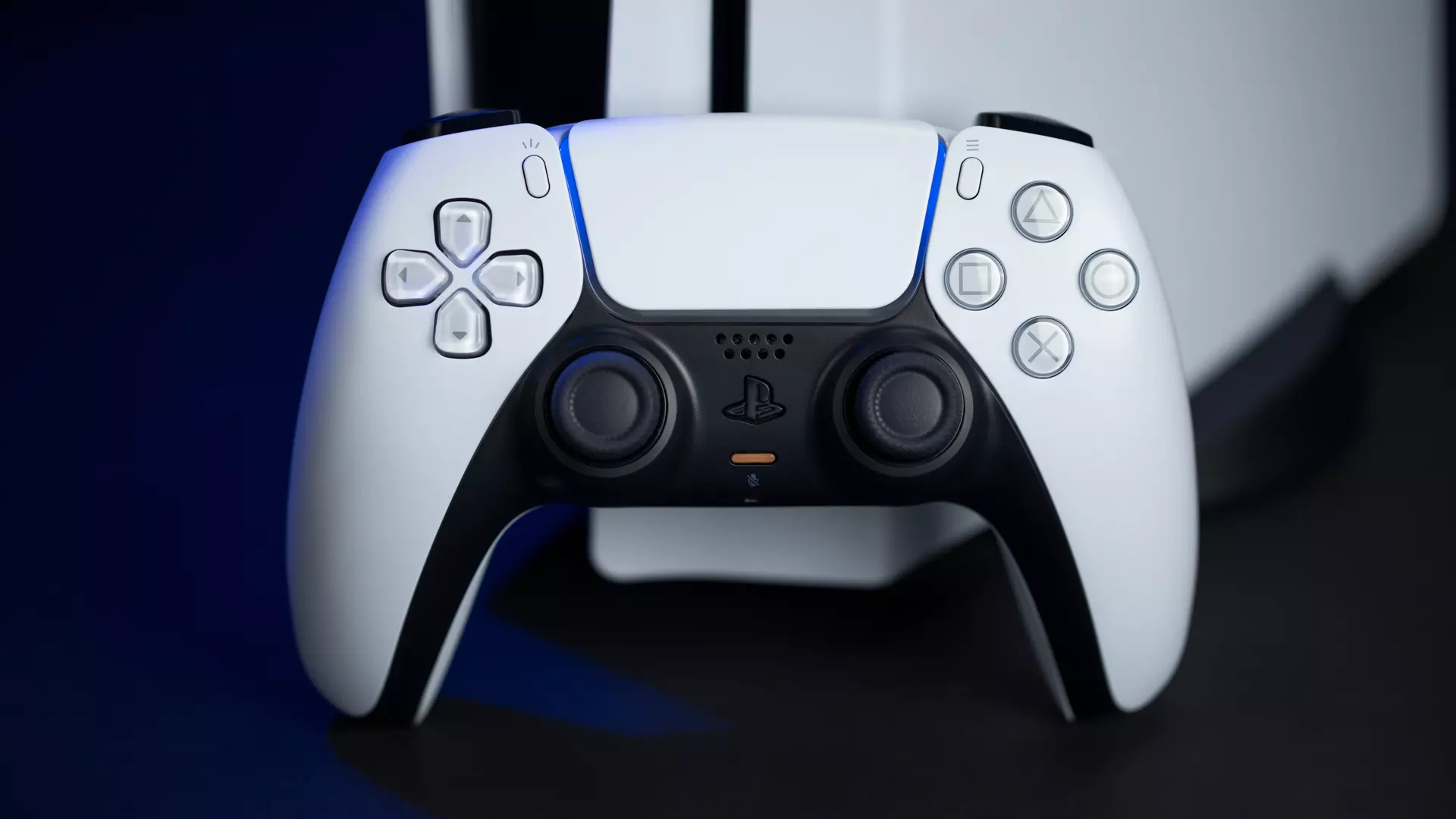The best way to play Diablo 4 is with a PS5 DualSense controller
More than a feeling

There’s no good way to be surrounded by demons, a fact especially true in Diablo 4, where the minions of hell will stop at nothing to tear you to ribbons. Faced alone, the terrors of Blizzard’s well-reviewed isometric action RPG can be difficult to manage.
Diablo 4’s gorgeously designed gothic dungeons are packed with hordes of monsters, making for an experience that can be disorienting, even to veterans of the isometric RPG genre. Playing as a Sorcerer, the most fragile of the Diablo 4 classes, I often found myself overwhelmed by large packs of enemies - surrounded on all sides by bloodthirsty killers. However, thanks to my new choice of hardware, I would soon find that I had a new ally in the ongoing battle.
Enter Sony's DualSense wireless controller. Despite my usual love of gaming on PC, I decided to try Diablo 4 on PS5 for a change of pace. The haptic feedback offered by the controller ensured that my forays in this new sensory frontier were much more than just an empty novelty.
Thanks to the controller’s use of directional rumble, I gained a new sense of awareness when it came to the direction and intensity of enemy attacks. Suddenly, the busy battlefields of Diablo 4 became far easier to parse. The extra level of information proved invaluable, allowing me to react to enemy attacks with a speed and clarity that was well beyond what I could previously muster.

Not only was the rumble’s directional element precise and informative, but the intensity also gave me clues as to how much damage I was taking in a given moment. This meant that using defensive abilities like Ice Armor could become an almost reflexive action - the feedback going straight from my hands to my brain and back again, without even having to look at what was going on. Thanks to this innovation, my eyeballs were freed up to help make other decisions: where to move to avoid incoming attacks, which skills to use as they came off cooldown, and where to strike back next.
Defensive abilities like Ice Armor could become an almost reflexive action
Diablo 4 also boasts a huge number of area-of-effect abilities, used by both allies and enemies. Between the wide array of particle effects and magical auras on show, it can be difficult to tell which effects are beneficial and which aren’t - especially in multiplayer games where your pals are slinging out spells and abilities with which you might not be familiar.
Fortunately, the DualSense has you covered again, providing a gentle rumble should you find yourself standing in a hostile effect allowing you to easily tell the difference between deadly puddles of poison and traps laid down by allies. However, thanks to the controller’s sophisticated motors, this background rumble can still be layered with directional damage indicators, allowing for a wide range of easily accessible non-visual information. In more tense battles, this piece of haptic feedback could be the difference between life and death.
Sign up for breaking news, reviews, opinion, top tech deals, and more.
Good vibrations

It may seem strange to be so enthused by something as simple as a rumble function, but, as someone who’s predominantly used to playing video games on a mouse and keyboard, I was blown away at the subtlety and precision the DualSense can achieve and offer.
My notion of what rumble really meant was first formed by the Rumble Pak for the Nintendo 64. Despite being mind-blowing in the late 1990s, the Rumble Pak’s capacity for blunt, monodirectional feedback would be considered primitive by today’s standards. Jumping forward to 2023, and though I’d read about the DualSense’s haptic triumphs, I’d yet to fully process - or experience - that rumble technology had advanced so far over the past two decades.
The DualSense is able to capture anything from a light tap to a tumultuous burst
The subtle and dynamic vibrations afforded by the DualSense’s motors allow for levels of precise feedback that eclipse the best Xbox controllers. The DualSense is able to capture anything from a light tap to a tumultuous burst. What’s more, the adaptive triggers allow for a sense of tactile feedback, allowing each trigger pull to be calibrated to the specific action you’re undertaking in the game.

These features exceed anything I could have imagined during the Nintendo 64 era. Once my eyes were opened by Diablo 4’s clever use of directional vibration functions, I began to try out other DualSense-friendly titles.
A fan of Spider-Man since the days of Neversoft's now-classic PS1 title, I opted to give Marvel’s Spider-Man Remastered by Insomniac Games a try. Adaptive triggers allowed slinging webs across New York to become a sensory feast. Thanks to the responsive physical feedback on the controller, I could feel the weight of Spidey’s parabolic movements. It was one thing to see the web-swinging in action but another altogether to feel the motion.
Adaptive triggers allowed slinging webs across New York to become a sensory feast
My experience with Marvel’s Spider-Man Remastered was positively colored by the DualSense’s haptic feedback at almost every moment. During the game’s combat, the rumble would complement in-game cues, not only giving you a sense of incoming threats but also helping you prepare a sneaky dodge or counterattack. As with Diablo 4, the DualSense’s rumble feature saved my bacon on more than a few occasions. Whether I found myself fighting a melodramatic supervillain or a horde of gibbering demons, the controller had my back.
Now, I take pains to use the DualSense wherever I can, whether I’m having a crack at one of the best PC games it’s compatible with or one of the best PS5 exclusives. To my shame, I had no idea what I was missing out on until I took a leap of faith with Diablo 4. If you’re still yet to try it, I urge you not to sleep any further on what Sony has managed with the DualSense. It is my hope that these innovations in sensory technology will further influence the design of controllers, and perhaps, even some of the future best gaming headsets, allowing us not only to see and hear our favorite games, but to feel them as well.
Looking for more great titles to play on your console of choice? Check out our lists of the best PS5 games, and best Xbox Series X games.

An editor and freelance journalist, Cat Bussell has been writing about video games for more than four years and, frankly, she’s developed a taste for it. As seen on TechRadar, Technopedia, The Gamer, Wargamer, and SUPERJUMP, Cat’s reviews, features, and guides are lovingly curated for your reading pleasure.
A Cambridge graduate, recovering bartender, and Cloud Strife enjoyer, Cat’s foremost mission is to bring you the best coverage she can, whether that’s through helpful guides, even-handed reviews, or thought-provoking features. She’s interviewed indie darlings, triple-A greats, and legendary voice actors, all to help you get closer to the action. When she’s not writing, Cat can be found sticking her neck into a fresh RPG or running yet another Dungeons & Dragons game.